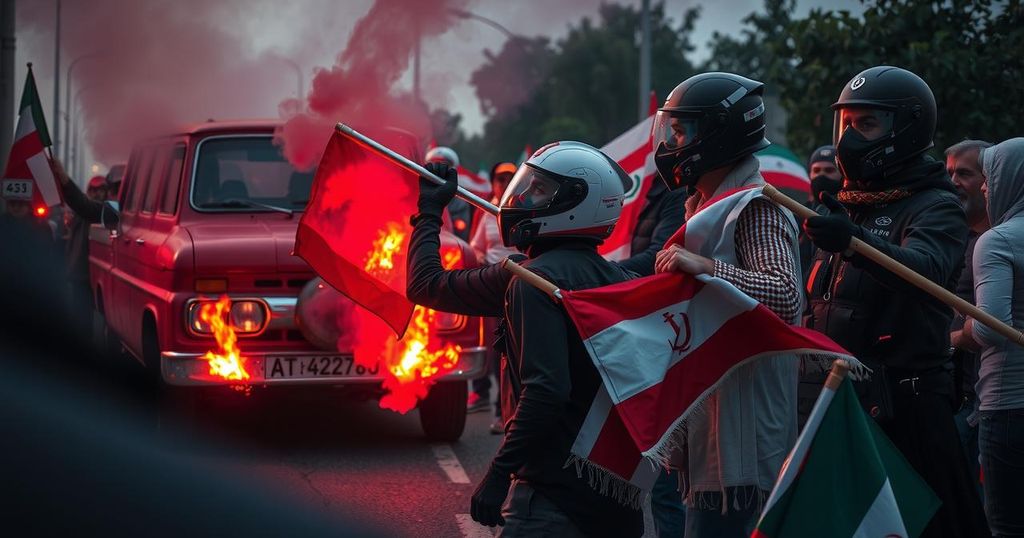Mass protests and strikes erupted across Iran on December 29, as citizens protested inflation, high prices, and poor living conditions. Merchants and retirees organized demonstrations demanding economic reforms, highlighting the severe economic crisis faced by the country. The turmoil reflects widespread dissatisfaction with the government’s handling of the economy and calls for accountability amidst ongoing unrest.
On December 29, Iran experienced widespread protests and strikes as citizens expressed discontent regarding rampant inflation and declining living standards. Merchants, retirees, and workers mobilized in several cities, including significant strikes in the Grand Bazaar of Tehran, where merchants echoed sentiments for economic reform and accountability from the government. The demonstrations featured slogans like “Don’t be afraid, close your shops!” underscoring the collective demand for change.
In Tehran, shop closures in the Grand Bazaar were indicative of a broader unrest, with merchants protesting against the soaring costs of raw materials, worsened by a troubling economic climate where the U.S. dollar surpassed 81,000 tomans. In addition to the merchants, retirees took to the streets across cities such as Ahvaz, Isfahan, and Shush, seeking better pensions and fundamental services as living costs rose dramatically.
The economic crisis prompting these protests is characterized by severe inflation affecting both daily and essential commodities. The price of gold coins skyrocketed, further exacerbating the financial strain on citizens, while economic analysts noted that governmental mismanagement might lead to hyperinflation, severely diminishing purchasing power for the populace.
In response to the mass gatherings, security forces were organized to oversee the protests, although demonstrators remained resolute in their actions. The Coordination Council of Retirees criticized leadership for its negligence in addressing the basic needs of citizens, accusing the regime of prioritizing military and ideological initiatives over public welfare.
Furthermore, the exodus of healthcare professionals highlights the systemic issues within vital sectors, pointing to a potentially catastrophic outcome for public services if these issues remain unaddressed. The ongoing protests signify a critical moment of contention between the Iranian regime and its citizens as dissatisfaction grows across various social strata, demanding immediate reforms and accountability.
This wave of protests serves as a poignant reminder of the challenges faced by the Iranian people amid deteriorating socio-economic conditions, with a clear message that calls for significant change.
The protests are rooted in long-standing economic difficulties in Iran, particularly regarding high inflation rates, currency devaluation, and inadequate salaries. Citizens’ frustrations have compounded over recent years, especially as prices for basic necessities have soared. The involvement of diverse social groups, including merchants and retirees, reflects a widespread disillusionment with the government’s handling of economic affairs and its prioritization of other initiatives over public welfare. As economic conditions continue to deteriorate, the protests embody a significant challenge to the Iranian regime’s stability and authority.
The December 29 protests in Iran mark a vital reflection of the public’s growing discontent towards the government, fueled by economic hardships and systemic issues. With citizens from various sectors uniting in their demands for change, the regime faces significant pressure to address these concerns. The ongoing unrest underscores an urgent need for reform and better governance, as continued unrest may weaken the government’s grip on power.
Original Source: www.ncr-iran.org






